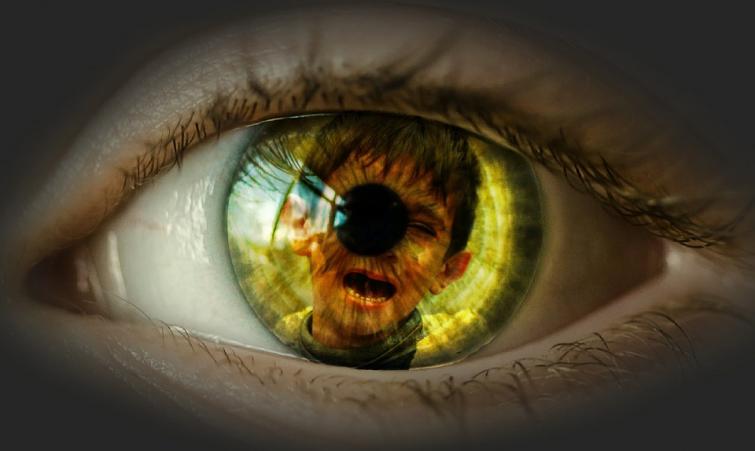
Growing up in poverty doubles diagnoses of psychosis-spectrum illnesses like schizophrenia, study says
New York, May 13 (IBNS): Being raised in impoverished urban neighbourhoods more than doubles the average person’s chances of developing a psychosis-spectrum disorder by middle adulthood. These are the striking findings of a new study by Concordia and University of California, Davis researchers involving nearly 4,000 families monitored over 30 years.
The study suggests intervention through social policies and investment in neighbourhood improvements could prevent future debilitating illnesses and the societal and personal costs associated with them. The authors also propose identifying young people most in need of help by observing certain child behaviours.
“Reducing poverty and neighbourhood disadvantage, including a variety of social, economic and physical characteristics, may be one pathway to improved mental health across the population,” says Lisa Serbin, Concordia University Research Chair in Human Development and one of the paper’s co-authors.
“Similarly, behavioural characteristics of children, such as aggression and social withdrawal, may help identify those for whom early intervention could be effective. This could act as a preventive measure in reducing major adult psychiatric disorders.”
Heredity, such as having a parent with a similar illness, is a major factor in predicting schizophrenia. But this study provides clear evidence that environmental factors experienced in childhood also affect future mental health. The findings apply equally to bipolar disorder and other disorders involving psychoses — that is, breaks with reality involving delusional beliefs and hallucinations.
Data dates back to the 1970s
The study, “Predicting psychosis-spectrum diagnoses in adulthood from social behaviors and neighborhood contexts in childhood,” was published April 24 in the journal Development and Psychopathology. Serbin conducted this study with co-authors Paul Hastings of UC Davis and Dale Stack, William Bukowski, Daniel Dickson and Alex Schwartzman of Concordia, plus Jonathan Helm of San Diego State University and Jane Ledingham of the University of Ottawa.
The origins of the Concordia Longitudinal Research Project date back to the 1970s. The initial researchers, Ledingham and Schwartzman, sought to test existing theories on the roles of early adversity and children’s social characteristics on the development of psychiatric disorders. The researchers followed families comprising nearly 11,000 individuals living in low-income urban communities in French-speaking parts of Montreal, such as Hochelaga-Maisonneuve. Peer reports of behaviour at school were used to assess children’s aggression, withdrawal and likeability.
Beginning in the mid-2000s, Hastings, Schwartzman, Serbin, Stack and their colleagues reviewed the previous three decades of individual medical records as well as census data on neighbourhood economic conditions. On average, the children were about 10 years old at the start of the study and were followed until they were 40. Over the same period, their parents aged from their late 30s into their late 60s. Researchers were able to analyze numerically coded records of the subject families in order to identify psychiatric diagnoses.
“Without a long time frame, large sample and inclusion of several generations, it would not be possible to identify multiple risk factors — nor would we be able to understand how they operate together in the development of major mental illness,” says Stack, a professor of psychology at Concordia.
“The Concordia Longitudinal Risk Project provides one of only a few data sets in the world that can be used to address these pressing research issues.”
Significant implications for early intervention
More than six per cent of the children studied had developed schizophrenia, bipolar disorder with psychosis and other psychosis-spectrum disorders by middle adulthood. Additionally, children who grew up in the most economically disadvantaged neighbourhoods had the greatest likelihood of being diagnosed with schizophrenia or bipolar disorder.
The study also found childhood social behaviours to be strong predictors of psychotic illnesses. In particular, children who were evaluated by their peers as both highly aggressive and highly withdrawn were likely to develop psychosis-spectrum disorders if they also grew up in more impoverished neighbourhoods.
“Although there is clearly a genetic component, shown in our findings by the elevated rates of psychosis-spectrum disorders in successive generations, there are also environmental factors and behavioural characteristics that predict mental health outcomes,” Serbin says. “From a prevention perspective, these additional predictors may be accessible for early intervention.”
She adds that these results can help at-risk children avoid developing serious mental illness later in life.
“There is no known cure for these severe disorders. Available treatments largely manage or limit chronic symptoms,” Serbin explains. “Accordingly, prevention is a really important avenue to explore, and it is only possible when the predictors, risks and protective factors have been identified prior to the appearance of mental illness.”
Support Our Journalism
We cannot do without you.. your contribution supports unbiased journalism
IBNS is not driven by any ism- not wokeism, not racism, not skewed secularism, not hyper right-wing or left liberal ideals, nor by any hardline religious beliefs or hyper nationalism. We want to serve you good old objective news, as they are. We do not judge or preach. We let people decide for themselves. We only try to present factual and well-sourced news.







